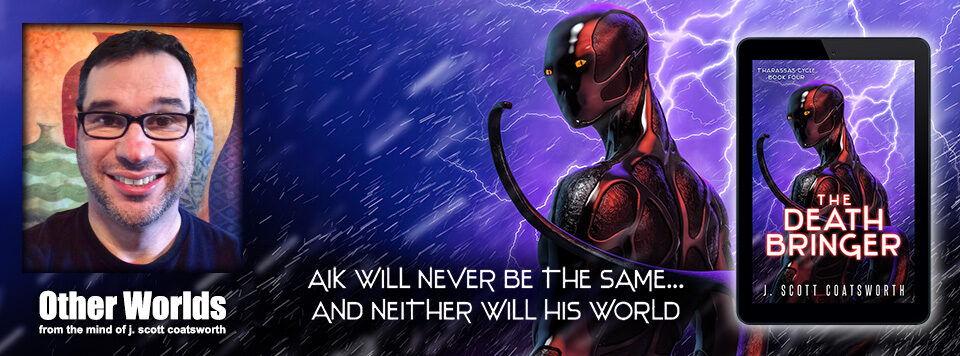
One of the first criticisms I received as a newbie writer was that my characterization was a bit thin. Readers loved my immersive sci-fi world building and my intricate plots, but my early characters fell a bit flat.
Ever since, I’ve been on a journey to learn how to delve deeper into the hearts of my characters, to make them really come alive on the page. I’ve made some good strides, but I still sometimes come up short.
Before I start a new book, I do a few things to learn more about each of my primary characters before diving into the actual novel writing:
Where Did You Come From? For each one, I come up with a backstory. What events molded them, making them who they are today. Were any of those events intersectional with the other characters in the story? What was the result?
What Drives You? I assign a primary motivation to each character, often in the form of a verb action. Run away. Double down. Pass the buck. Something that describes their go-to action when things get hard. I learned this from Damon Knight, and it’s been an invaluable tool for short-handing my characters’ motivations.
In my current WIP, one character lost his mother at an early age in a tragic fire, and is scared to death of losing someone else, so he runs away from anything good. His love interest is a guard who needs to protect everyone he loves, and is frustrated when his crush keeps finding ways to keep things cool between them. Run Away is inherently in conflict with Save and Protect.
What Are You Afraid Of? I also figure out their greatest fear – what would absolutely gut them if it happened to them? Dangle this in front of them and watch them squirm. I picked this one up from The Art of Character, by David Corbett.
How Are You All Tangled Up With the Others? Then I figure out the interpersonal relationships with the other primary character(s). What do they want from each other? Where is there conflict? This is especially helpful when constructing scenes – knowing what each character is after when they start, and what happens if/when they get it (or not).
What Little Things Make You Into You? In addition to the characters’ physical characteristics (hair color, eyes, height, skin tone etc) I think about the little habits each character displays that makes them unique.
One of my favorite examples of this is Nynaeve in the Wheel of Time series, who is always yanking on her braid when she’s in distress. It makes her unique – she has a braid (visual detail) and she pulls on it, creating an action which reminds us that she’s in a near constant state of agitation over something or other.
What’s Your Character Trope? For this, I’ve drawn heavily on Amy Lane’s Crafting Category Romance. Although technically a book about writing romance, Lane nails it with her character tropes, which can be used in almost any fictional genre. Each of them comes with built-in conflicts that can help drive the story.
For my WIP, I chose Fish Out of Water and Orphan for one of the primary characters, and Protector for the other, a trait which gets exploited and turned on its head by the end of the story.
What TV/Movie Character Are You? Part of the art of writing good characters is visualizing all of this and carrying it in your head as you write each scene. Where is the character coming from? How will they react to the influences in that scene? And how will other characters react to them?
For this, I find it helpful at times to identify a character or relationship from a favorite series or movie of mine that fits the character(s) (I’m writing. In my current WIP, I’m using Emily and Lorelei Gilmore (The Gilmore Girls) as templates for a mother-daughter pair in the story – even though it’s a sci-fantasy set on a planet far away in space and time from Hartford, Connecticut. It’s the relationship dynamic that counts, not the character details. If you took away all the sci-fantasy settings, you could probably picture most conversations between these two taking place over a fine meal in Emily Gilmore’s posh dining room.
The Bottom Line: When you truly understand your characters, you can begin to write them as the magnificent, unique beasts that they are, and start to make them come alive for your readers. It’s all about immersion.
I can’t claim to be perfect at this yet, but I am getting better with every book. I can’t wait to introduce you to the characters from my latest – they’re my best yet!. 🙂
To my writer friends – how do you write great characters? Give us your tips and tricks.
